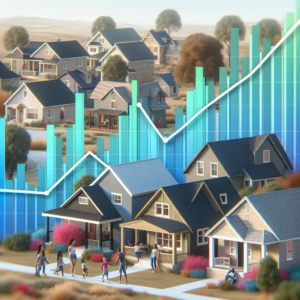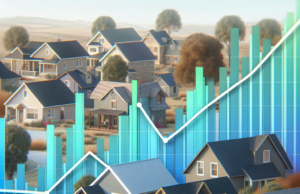Land Use Policies: The Hidden Forces Shaping Our Future Landscapes

Land use policies are critical frameworks that dictate how land is utilized, developed, and preserved. These policies encompass a wide range of regulations and guidelines that influence urban planning, agricultural practices, and environmental conservation. As societies grapple with rapid urbanization, climate change, and population growth, understanding the intricacies of land use policies becomes essential for shaping sustainable and resilient landscapes. This article delves into the definitions, historical evolution, governmental roles, environmental impacts, community engagement, and future directions of land use policies, highlighting their significance in shaping our future landscapes.
Understanding Land Use Policies: Definitions and Key Concepts Explained
Land use policies refer to the strategic guidelines and regulations that govern the management and development of land resources. These policies are designed to balance various interests, including economic growth, environmental protection, and social equity. Key concepts within land use policies include zoning, which categorizes land for specific uses such as residential, commercial, or industrial; land tenure, which defines ownership rights and responsibilities; and land use planning, which involves the systematic assessment and allocation of land resources to meet community needs. By establishing a framework for land utilization, these policies play a pivotal role in determining how communities grow and evolve over time.
Historical Context: How Land Use Policies Have Evolved Over Time
The evolution of land use policies can be traced back to ancient civilizations, where land management was often dictated by agricultural needs and social hierarchies. However, the modern framework began to take shape in the early 20th century, particularly with the advent of urbanization and industrialization. The introduction of zoning laws in the 1920s marked a significant turning point, as cities sought to regulate land use to prevent conflicts between incompatible activities. Over the decades, land use policies have continued to adapt in response to changing societal values, technological advancements, and environmental challenges. The rise of environmental movements in the late 20th century further influenced policy development, emphasizing the need for sustainable land management practices.
The Role of Government: Regulatory Frameworks and Policy Implementation
Governments at various levels—local, regional, and national—play a crucial role in formulating and enforcing land use policies. Regulatory frameworks are established to guide land development and conservation efforts, ensuring that they align with broader societal goals. This involves the creation of comprehensive plans, zoning ordinances, and environmental regulations that dictate how land can be used and developed. Additionally, government agencies are responsible for monitoring compliance and addressing violations. Effective policy implementation requires collaboration among various stakeholders, including urban planners, environmentalists, and community members, to ensure that land use decisions reflect the needs and aspirations of the population.
Environmental Impacts: Assessing the Consequences of Land Use Decisions
Land use decisions have profound environmental implications that can affect ecosystems, biodiversity, and climate resilience. Urban sprawl, for instance, often leads to habitat destruction, increased greenhouse gas emissions, and the depletion of natural resources. Conversely, well-planned land use policies can promote sustainable practices, such as preserving green spaces, enhancing public transportation, and encouraging mixed-use developments that reduce reliance on automobiles. Assessing the environmental impacts of land use decisions requires comprehensive studies and modeling to understand potential consequences and inform future planning efforts. Policymakers must prioritize ecological considerations to mitigate adverse effects and promote sustainable land management practices.
Community Engagement: The Importance of Public Participation in Policy Making
Public participation is a cornerstone of effective land use policy development. Engaging communities in the decision-making process ensures that diverse perspectives and local knowledge are considered, fostering a sense of ownership and accountability among residents. Various methods, such as public hearings, workshops, and surveys, can be employed to solicit input from community members. This participatory approach not only enhances the legitimacy of land use policies but also helps identify potential conflicts and areas of concern early in the planning process. By prioritizing community engagement, policymakers can create more inclusive and equitable land use strategies that reflect the values and needs of the population.
Future Directions: Innovations and Challenges in Land Use Policy Development
As we look to the future, land use policies must evolve to address emerging challenges such as climate change, population growth, and technological advancements. Innovations in data analytics, geographic information systems (GIS), and smart city technologies offer new opportunities for more effective land use planning and management. However, these advancements also present challenges, including the need for updated regulatory frameworks and the potential for increased surveillance and data privacy concerns. Policymakers must navigate these complexities while striving to create resilient and sustainable landscapes that can adapt to changing conditions. Collaborative efforts among governments, communities, and private sectors will be essential in shaping the future of land use policies.
In conclusion, land use policies are fundamental to shaping the landscapes of our communities and addressing the multifaceted challenges of the 21st century. By understanding their definitions, historical context, governmental roles, environmental impacts, the importance of community engagement, and future directions, we can better appreciate the hidden forces that influence our environment. As we move forward, a commitment to sustainable practices and inclusive policymaking will be vital in ensuring that our land use decisions contribute positively to the well-being of both current and future generations.


















